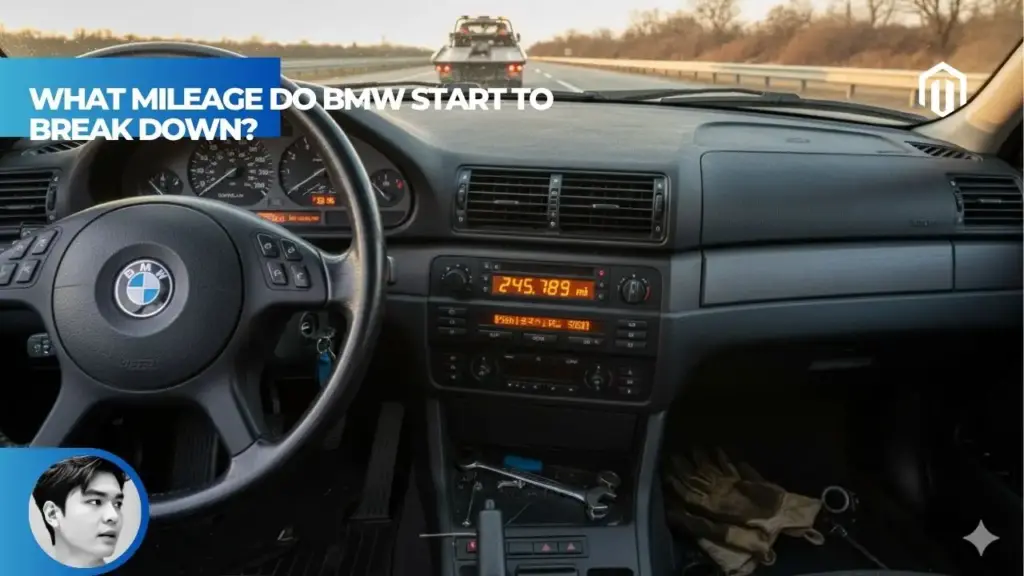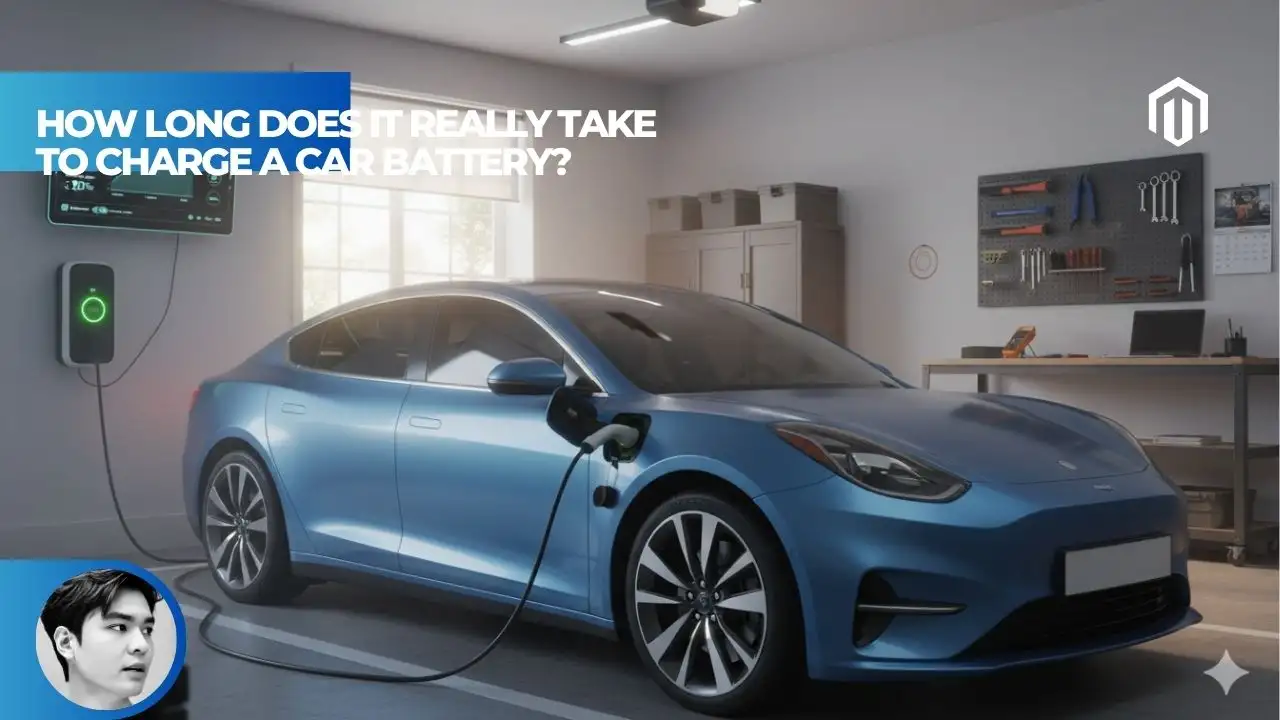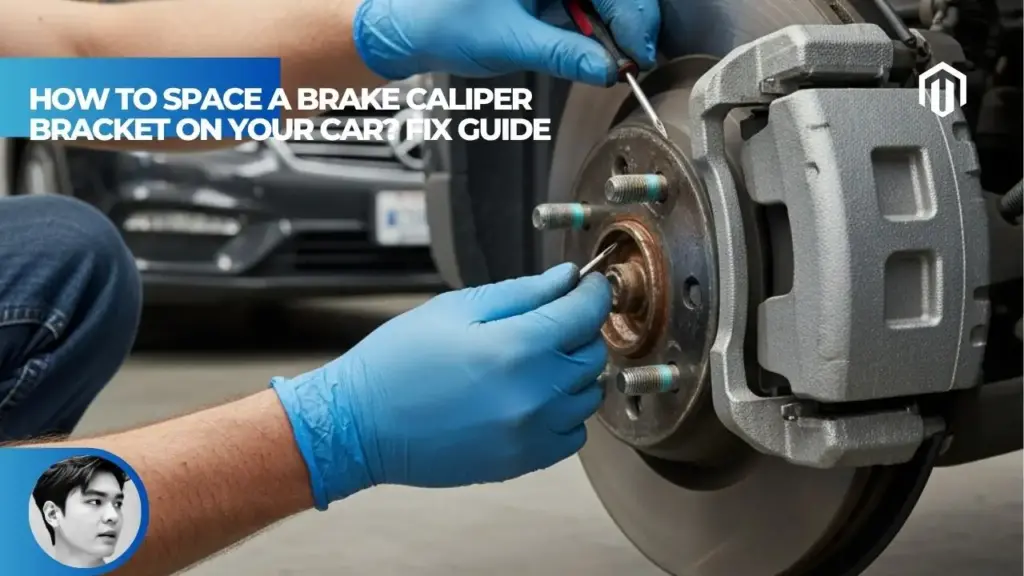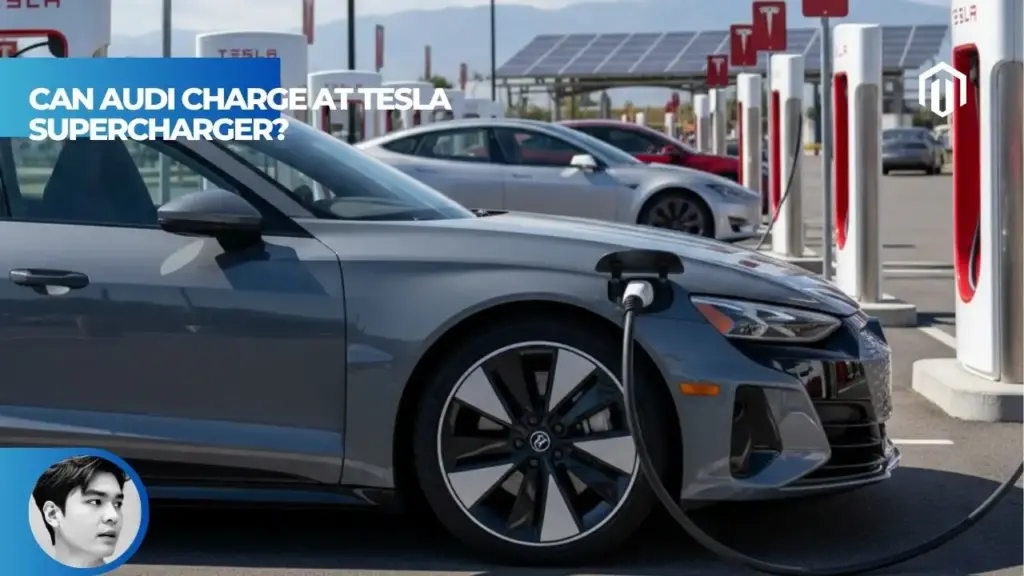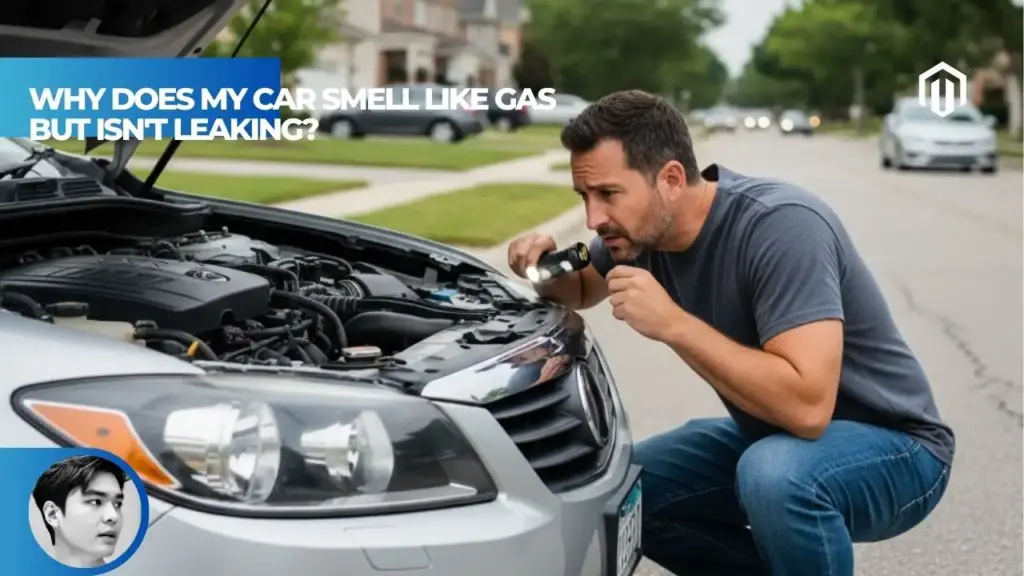You may also like:
- 【Explained】How Many Miles Is Good for a Used Car? (Why Maintenance Matters More)
- 【Explained】What Is More Reliable: BMW or Mercedes? (Repair Costs)
- 【Explained】How Many Miles Can Audi Last? Factors Affecting Lifespan and Reliability
- 【Explained】What’s the Maintenance Cost for BMW? 10-Year Ownership Averages and Budgeting
- 【Explained】What Is More Expensive: BMW or Mercedes? (Cost of Ownership)
BMWs typically start experiencing major repairs around 100,000-120,000 miles when cooling systems and gaskets fail, though properly maintained models can reach 200,000-250,000 miles. The critical decision point is whether repair costs exceed the vehicle’s value around this threshold.
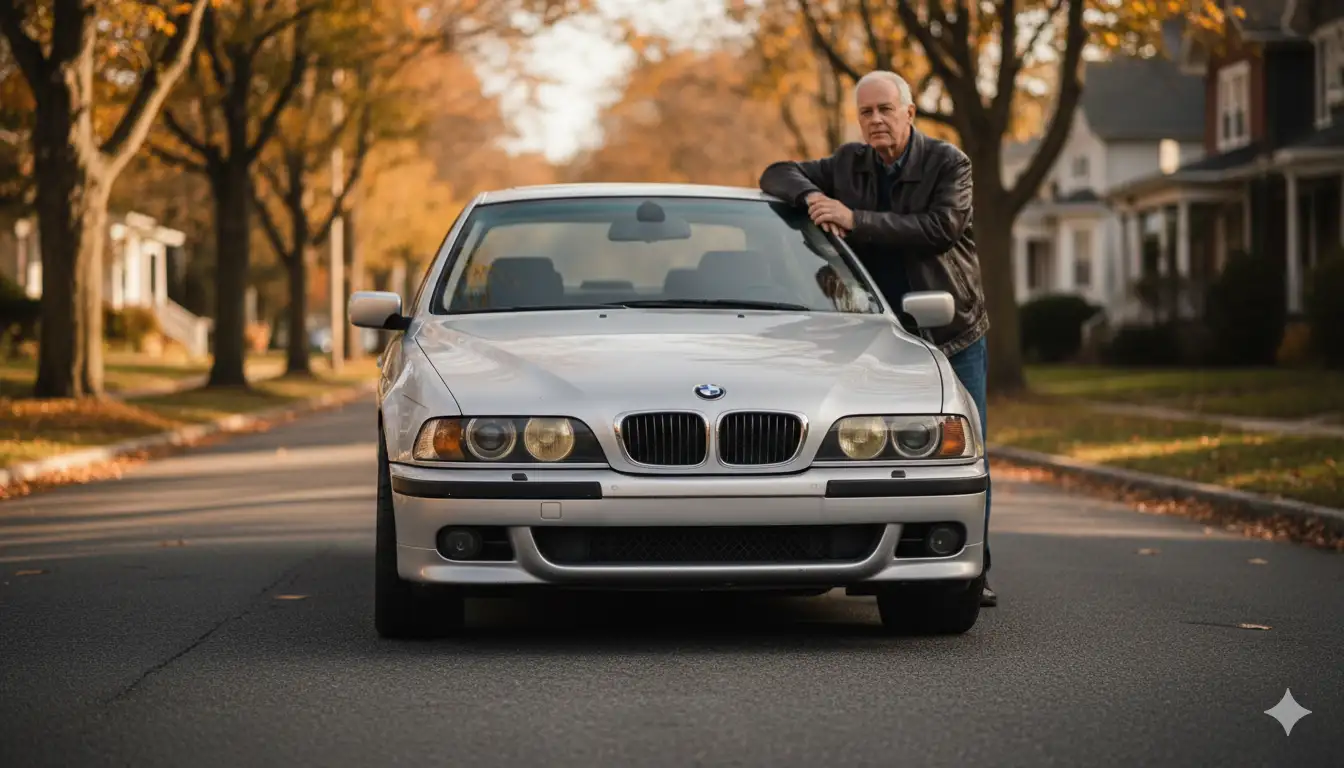
Critical Mileage Thresholds When BMWs Start Breaking Down
Understanding when BMWs require major maintenance helps you plan financially and decide whether to keep, sell, or buy a high-mileage model. These German engineering marvels follow predictable patterns of wear that smart owners can anticipate and budget for accordingly.
BMW Problems Starting at 100k Miles
The 100,000-mile mark represents a watershed moment for BMW ownership. At this mileage, expect to spend between $750-$1,200 annually on maintenance, compared to roughly $652 for the average vehicle[1]. Common issues emerging at this threshold include valve cover gasket leaks ($720-$1,800), water pump failures ($600-$900), and VANOS solenoid problems ($400-$600)[2].
According to Autvex maintenance experts, this is when BMW’s famous “preventative maintenance” philosophy becomes critical. The difference between a BMW that makes it to 200,000 miles and one that becomes a money pit at 120,000 often comes down to addressing these issues proactively rather than reactively.
BMW owners report spending approximately $1,500 annually on maintenance after 100,000 miles, with brake replacements, filters, and fluid changes costing $99-$199 about every six months[3]. When considering purchasing a used high-mileage vehicle, factor these costs into your budget.
Major BMW Repairs After 150,000 Miles
Once your BMW crosses 150,000 miles, you’re entering territory where major component replacements become necessary. Timing chain replacements ($3,000-$5,000), transmission rebuilds ($4,000-$6,000), and cooling system overhauls ($2,000-$3,000) are typical at this stage[1]. The frequency of repairs also increases, with most high-mileage BMWs requiring major service every 10,000-15,000 miles.
BMW dealerships report that repairs become 40% more expensive after 150,000 miles due to additional labor requirements. Components that were accessible at lower mileages often require removal of surrounding parts, increasing labor hours significantly. For example, total maintenance costs for an 11-year-old BMW with 100,000 miles averaged $6,497 over the ownership period, or $8,350 when including brake upgrades[4].
The suspension system typically requires complete overhaul around this mileage. Control arms, bushings, and shocks deteriorate, leading to poor handling and increased tire wear. A complete suspension refresh costs $2,500-$4,000 depending on the model.
BMW Engine Reliability Past 200k Miles
BMW engines can reliably hit 200,000 to 300,000 miles with disciplined maintenance, especially models with inline-six or diesel engines[5]. The naturally aspirated N52 inline-six shows exceptional longevity, with many examples exceeding 250,000 miles when oil is changed every 5,000 miles[6]. Modern B58 turbocharged engines demonstrate similar reliability, with well-documented cases surpassing 200,000 miles[7].
At 200,000+ miles, even well-maintained BMWs require engine refreshing. Valve stem seals, piston rings, and rod bearings may need replacement, though the core engine block often remains sound. Many BMW 3 Series owners report their vehicles still running strong at these mileages with proper care.
When Does the Factory Warranty End on BMW
BMW’s factory warranty expires at 4 years or 50,000 miles for the comprehensive warranty, with powertrain coverage extending to the same period[8]. The complimentary Ultimate Care maintenance plan covers scheduled services for the first 3 years or 36,000 miles, after which owners face the full cost of BMW maintenance. The Ultimate Care Oil Services plan offers unlimited oil changes for three years at $249 plus taxes[8].
This warranty expiration often coincides with the first wave of expensive repairs around 60,000-80,000 miles, making extended warranties or maintenance plans worth considering for those planning to keep their vehicles long-term.
Common Failure Points at High Mileage
BMW’s sophisticated engineering comes with predictable failure points that experienced owners learn to anticipate and budget for accordingly. Understanding these common issues helps you make informed decisions about maintenance and repairs.
BMW Cooling System Failure Mileage (Electric Water Pump, Thermostat)
The cooling system represents BMW’s most notorious weakness, with failures typically occurring between 80,000-100,000 miles. A complete cooling system overhaul costs $1,500-$2,500 at independent shops, or up to $3,000 at dealerships. The electric water pump alone runs $600-$900 including labor, while thermostat replacement adds another $400-$600.
BMW’s use of plastic components in the cooling system, while reducing weight, means these parts become brittle with age and heat cycles. Expansion tanks crack, radiator end tanks fail, and hoses deteriorate—often simultaneously around the 100,000-mile mark. Autvex recommends preemptive cooling system refreshes at 80,000 miles to avoid roadside failures.
| Component | Typical Failure Mileage | Replacement Cost |
|---|---|---|
| Electric Water Pump | 80,000-100,000 | $600-$900 |
| Thermostat | 90,000-110,000 | $400-$600 |
| Expansion Tank | 80,000-100,000 | $200-$350 |
| Radiator | 100,000-120,000 | $500-$800 |
| Coolant Hoses | 80,000-100,000 | $150-$300 |
Common BMW Oil Leaks – The Gasket Trifecta
The infamous “gasket trifecta” refers to three oil leak sources that plague high-mileage BMWs between 80,000-120,000 miles. Minor oil leak repairs range from $400-$660, but addressing all three gaskets simultaneously can total $2,000-$3,500[2].
Valve Cover Gasket Issues
Valve cover gasket failure typically appears first, usually around 80,000 miles. Symptoms include oil smell in the cabin, visible oil on the engine block, and occasional smoke from oil dripping onto the exhaust. Replacement costs $720-$1,800 at shops, though DIY repairs with $80 in parts can save significant money[2].
Oil Filter Housing Gasket Problems
The oil filter housing gasket typically fails around 90,000-100,000 miles, causing oil to leak down the driver’s side of the engine. This $600-$900 repair becomes critical as the leak can damage belts and create fire hazards if oil reaches hot exhaust components.
Oil Pan Gasket Failures
Oil pan gasket leaks emerge last, typically after 100,000 miles. This labor-intensive repair costs $2,600 due to subframe removal requirements on many models[2]. DIY enthusiasts can save significantly here, with parts costing only $100-$150, though the job requires advanced mechanical skills.
Failure of Plastic and Rubber Parts on BMW
Beyond the cooling system, BMW’s extensive use of plastic and rubber components leads to failures around 100,000-120,000 miles. Intake boots crack ($200-$400), vacuum lines deteriorate ($300-$500), and door seals fail ($400-$800 per door). The BMW X3 and similar SUVs are particularly prone to these issues due to additional stress from their weight.
VANOS Solenoid Problems Mileage
VANOS (BMW’s variable valve timing system) solenoids typically fail between 100,000-150,000 miles, causing rough idle, reduced power, and poor fuel economy. Replacement costs $400-$800 for parts and labor, though many owners report this as a successful DIY project saving 60% of shop costs.
Timing Chain Issues on Specific BMW Engines (N47, N20, S65)
Certain BMW engines have notorious timing chain problems requiring vigilant monitoring:
- N20 four-cylinder (2012-2015): Chain guide failure at 60,000-80,000 miles
- N47 diesel engines: Similar issues at comparable mileage
- S65 V8 (E90/E92 M3): Rod bearing replacement needed at 60,000-80,000 miles
Preventative chain replacement costs $3,000-$5,000, while engine replacement after failure can exceed $10,000. Listen for chain rattle on cold starts as an early warning sign.
Suspension Component Wear and Tear Mileage
BMW suspension components typically last 80,000-100,000 miles before requiring attention. Control arm bushings fail first ($400-$600 per side), followed by shocks and struts ($1,500-$2,500 for all four corners). The sophisticated suspension on models like the 5 Series may cost more to repair due to adaptive dampers and additional sensors.
BMW Longevity Factors and Maintenance Requirements
The difference between a BMW that reaches 250,000 miles and one that becomes unreliable at 150,000 miles often comes down to maintenance philosophy and engine choice.
How to Make a BMW Last 200k Miles
Achieving 200,000+ miles requires disciplined maintenance beyond factory recommendations:
- Oil changes every 5,000-7,500 miles instead of the 10,000+ factory interval
- Cooling system refresh at 80,000 miles before failures occur
- Transmission fluid changes every 60,000 miles despite “lifetime fill” claims
- Address leaks immediately to prevent cascading damage
- Use OEM or equivalent parts for critical components
BMW owners who follow these guidelines report significantly lower failure rates and longer engine life. Documentation of this maintenance also preserves resale value.
Cost to Maintain BMW Past 100k Miles
After 100,000 miles, BMW owners should budget $968-$1,200 annually for routine maintenance, not including major repairs[1]. This compares to $652 for the average vehicle and $987 for Audi, making BMW slightly more expensive than its German competitors[1].
| BMW Model | Annual Maintenance Cost |
|---|---|
| BMW 330i | $748 |
| BMW 528i | $825 |
| BMW X3 | $1,034 |
| BMW X5 | $1,166 |
| BMW M5 | $1,173 |
DIY vs Dealer Repair Costs BMW High Mileage
DIY maintenance can reduce costs by 60-70% on many repairs. For example, valve cover gasket replacement costs $720-$1,800 at shops but only $80-$100 in parts for DIY[2]. BMW owners doing their own work report annual costs around $1,000 versus $3,000+ for dealer service[9].
However, some repairs require specialized tools and expertise. Timing chain replacements, transmission work, and diagnostic programming typically need professional attention. Consider learning basic maintenance while leaving complex repairs to specialists.
B58 Engine Reliability High Mileage
The B58 turbocharged inline-six represents BMW’s most reliable modern engine, with documented cases exceeding 200,000 miles without major failures[7]. Introduced in 2016, this engine addresses many issues of earlier turbocharged designs through improved cooling, stronger internals, and better oil management.
B58 engines show no pattern failures after 15 years of production, earning trust comparable to naturally aspirated designs[7]. With proper maintenance, the B58 rivals the legendary N52 for longevity while delivering superior performance.
N52 Engine Longevity
The naturally aspirated N52 remains BMW’s reliability benchmark, routinely achieving 250,000-300,000 miles with basic maintenance[6]. This engine, found in many 2006-2015 models, lacks the complexity of turbocharged designs, resulting in fewer failure points.
Common N52 issues are minor compared to other BMW engines: valve cover gaskets, electric water pumps, and VANOS solenoids. The engine block itself rarely fails, making high-mileage N52-equipped BMWs excellent value propositions for budget-conscious enthusiasts.
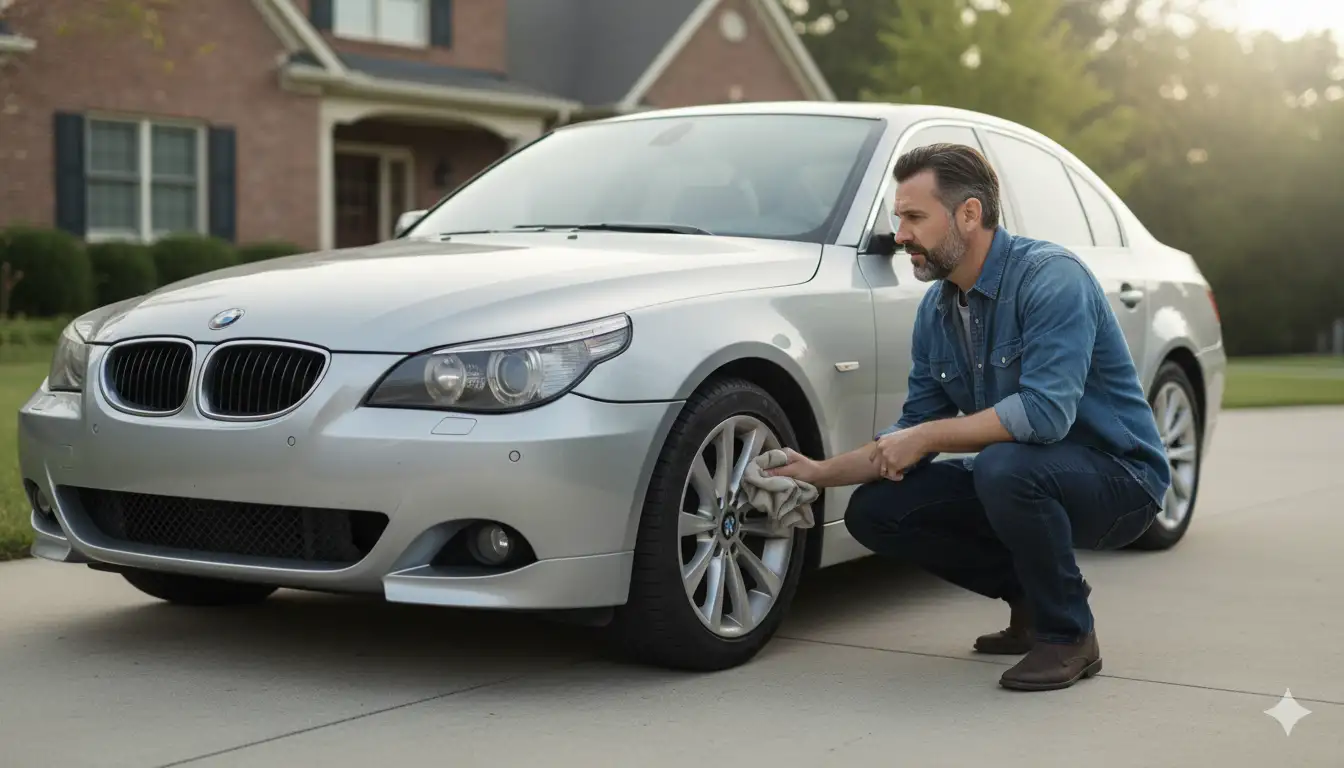
Financial Considerations for High-Mileage BMWs
Understanding the financial implications of high-mileage BMW ownership helps you make informed decisions about buying, selling, or maintaining these vehicles.
BMW Resale Value After 100k
BMWs experience significant depreciation after 100,000 miles, typically retaining only 35-45% of their original MSRP. A $50,000 BMW might be worth $17,500-$22,500 at this milestone, though well-maintained examples with complete service records command premiums.
Factors affecting resale value include:
- Complete maintenance records
- Number of previous owners
- Accident history
- Model desirability (M-Sport, rare colors, specific engines)
- Recent major service completion
Is a Used High-Mileage BMW a Money Pit
High-mileage BMWs aren’t automatically money pits, but they require careful evaluation. Budget $3,000-$5,000 annually for maintenance and repairs on 100,000+ mile examples. Models with the N52 or B58 engines offer better reliability prospects than early turbocharged designs.
Insurance considerations also matter—comprehensive coverage may not be cost-effective on high-mileage BMWs given their depreciated values.
The $3,000 Repair Rule (When to Trade a High Mileage Car)
The “$3,000 rule” suggests selling when annual repair costs exceed this threshold or 25% of the vehicle’s value, whichever is lower. For a BMW worth $12,000, repairs exceeding $3,000 annually signal it’s time to sell. This rule helps prevent emotional attachment from clouding financial judgment.
Consider total ownership costs including:
- Repair frequency and severity
- Insurance premiums
- Registration fees
- Opportunity cost of capital tied up in repairs
Mileage to Sell a BMW Before Expensive Repairs
Strategic selling points for BMWs include:
- 80,000 miles: Before cooling system overhaul
- 95,000 miles: Before gasket trifecta failures
- 115,000 miles: Before timing chain concerns on affected engines
- 145,000 miles: Before major suspension work
Selling at these intervals maximizes value while avoiding expensive repairs. Private party sales typically yield 15-20% more than trade-in values for well-maintained examples.
BMW vs Competition Reliability Comparison
Understanding how BMW compares to competitors helps contextualize maintenance costs and reliability expectations.
BMW vs Audi vs Mercedes Reliability at 100k
At 100,000 miles, German luxury brands show similar maintenance costs and reliability patterns:
| Brand | Annual Maintenance Cost | Common Issues at 100k | Reliability Rating |
|---|---|---|---|
| BMW | $968 | Cooling system, gaskets, VANOS | 2.5/5 |
| Audi | $987 | Timing chains, turbos, electronics | 2.5/5 |
| Mercedes | $908 | Air suspension, electronics, transmissions | 3/5 |
BMW’s maintenance costs fall between Audi and Mercedes[1]. While Audi longevity rivals BMW’s, Mercedes often edges ahead in reliability surveys, though individual model variations exist.
Difference Between ‘Reliable’ and ‘Neglect Tolerant’ Cars
BMW builds reliable but not neglect-tolerant vehicles. Following maintenance schedules yields excellent longevity, but skipping services causes cascading failures. Japanese brands like Toyota and Honda tolerate neglect better, running longer between services without catastrophic failure.
This distinction matters for ownership style. Enthusiasts who enjoy maintaining vehicles find BMWs rewarding, while those seeking appliance-like transportation should consider alternatives. BMW ownership requires engagement with the vehicle’s needs.
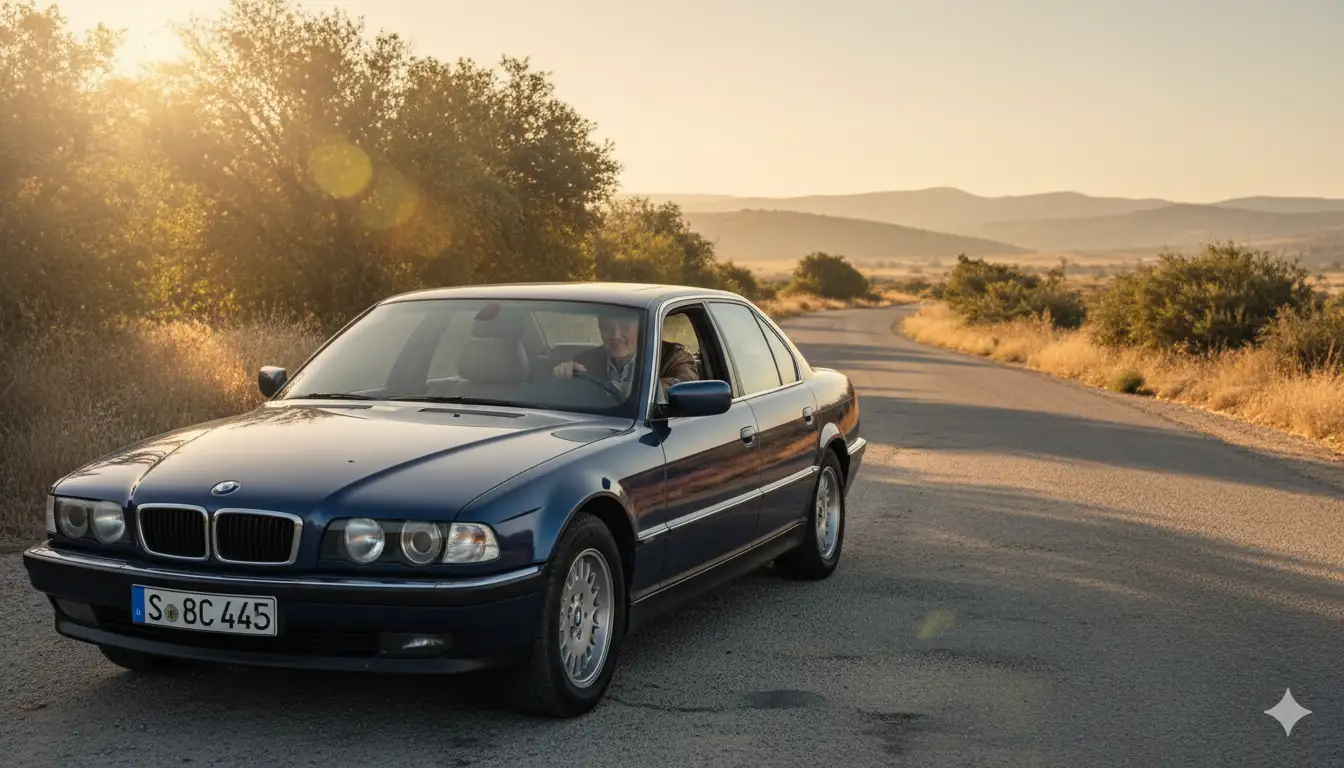
Key Takeaway
BMWs typically begin experiencing significant repair needs around 100,000-120,000 miles when cooling system components and gaskets fail, though properly maintained models can reach 200,000-250,000 miles. The critical decision point is whether repair costs exceed the vehicle’s value around this threshold.
Key points to remember:
- Budget $750-$1,200 annually for maintenance after 100,000 miles
- Cooling system and gasket repairs are inevitable around 100k
- N52 and B58 engines offer best longevity prospects
- DIY maintenance can reduce costs by 60-70%
- Sell strategically before major repair milestones
- Complete service records preserve value significantly
- German luxury competitors have similar cost profiles
Next Steps
Evaluate your BMW’s service history through Carfax or dealer records to understand its maintenance status. Get a pre-purchase inspection for high-mileage models from a BMW specialist, budgeting $200-$300 for comprehensive evaluation. Budget $3,000-$5,000 annually for maintenance after 100,000 miles, establishing a repair fund to avoid financial surprises.
Consider selling before 150,000 miles if you’re not prepared for DIY repairs or lack access to affordable independent shops. For those keeping their BMWs long-term, invest in diagnostic tools and join online communities for support. The Autvex resource center provides detailed maintenance guides and cost comparisons to help you make informed decisions.
Whether buying, selling, or maintaining a high-mileage BMW, understanding these patterns empowers you to enjoy these ultimate driving machines while managing costs effectively.
Frequently Asked Questions
Is 100k miles too high for a used BMW?
Not necessarily – with proper maintenance history and inspection, a 100k mile BMW can provide reliable service. However, budget for increased maintenance costs as cooling systems and gaskets typically need replacement around this mileage.
What is the most expensive BMW repair after 100,000 miles?
Timing chain replacement ($3,000-5,000), transmission rebuilds ($4,000-6,000), and cooling system overhauls ($2,000-3,000) are typically the costliest repairs after 100k miles on BMWs.
How many miles can a BMW engine realistically last?
BMW engines can last 200,000-250,000 miles with proper maintenance, with some N52 and B58 engines exceeding 300,000 miles when regularly serviced.
Which BMW models and engines are the most reliable for high mileage?
The naturally aspirated N52 inline-six and newer B58 turbocharged engines are considered most reliable for high mileage, while N47 diesel and early N20 turbos have known timing chain issues.
Do modern turbocharged BMW engines (B58, B48) last longer than old ones?
Modern B58/B48 engines show improved reliability over early turbocharged designs, though naturally aspirated engines like the N52 still have longevity advantages due to simpler design.
How often should I change the oil on a high mileage BMW?
Change oil every 5,000-7,500 miles on high-mileage BMWs rather than following the 10,000+ mile factory intervals to prevent sludge buildup and extend engine life.
What are the common issues with a BMW cooling system after 80k miles?
Electric water pumps fail around 80-100k miles, thermostats stick, expansion tanks crack, and radiator hoses become brittle – expect $1,500-2,500 for complete cooling system refresh.
Is it worth it to buy an extended warranty for an older BMW?
Extended warranties can be worthwhile if covering major components like engine/transmission, but read exclusions carefully as many don’t cover common BMW failures like gaskets and cooling systems.
What are the “gasket trifecta” problems on a BMW?
The gasket trifecta refers to three common oil leak sources: valve cover gasket, oil filter housing gasket, and oil pan gasket – all typically failing between 80-120k miles.
References
- Automoblog. (2025). BMW Maintenance Cost: What You Might Pay. https://www.automoblog.com/reviews/maintenance/bmw-maintenance-cost/
- TechPlus Automotive. (2025). BMW Oil Leak Repair Costs 2025. https://techplusautomotive.com/bmw-oil-leak-repair-costs-2025/
- Reddit BMW Community. (2022). Yearly Maintenance Costs Discussion. https://www.reddit.com/r/BMW/comments/txt9zk/what_would_you_say_your_yearly_maintenance_costs/
- Bimmerpost Forums. (2025). Maintenance Costs at 11 years, 100000 Miles. https://f30.bimmerpost.com/forums/showthread.php?p=32185953
- Hendrick BMW. (2025). How Many Miles Can a BMW Last: Complete Guide. https://www.hendrickbmwcposouth.com/blog/2025/july/28/how-many-miles-can-a-bmw-last-a-complete-guide-for-smart-buyers-in-south-charlotte.htm
- Facebook BMW Groups. (2025). High Mileage BMW N52 Engine Maintenance and Longevity. https://www.facebook.com/groups/938184509942736/posts/1805784033182775/
- Reddit F30 Community. (2025). B58 Reliability Experience Discussion. https://www.reddit.com/r/F30/comments/10ukg2p/b58_reliability_experience/
- BMW USA Service. (2025). BMW Ultimate Care Maintenance Plans. https://bmwusaservice.com/ultimatecare
- Reddit BMW Community. (2014). BMW Maintenance Cost When Doing Work Yourself. https://www.reddit.com/r/BMW/comments/21jtv5/bmw_maintenance_cost_when_doing_the_work_yourself/

I am a senior automotive analyst at Autvex. Expert vehicle evaluations, in-depth reviews, and objective analysis helping readers make informed automotive decisions with years of industry experience.

